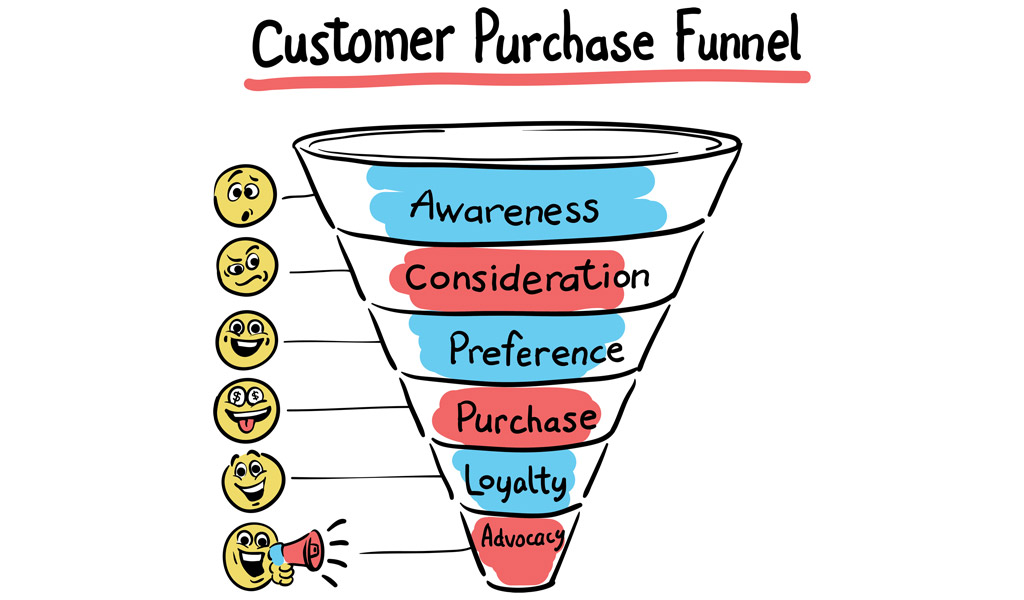How to Use Storytelling and Skyrocket Your Conversion Rate Optimisation (CRO)
Have you noticed how emotional stories behind products can greatly enhance their price and value in the perception of a potential client? There have been numerous studies concluding that the price of a collectible item can dramatically increase when imbued with a background story. What would you prefer to purchase a sword, or to purchase […]

Have you noticed how emotional stories behind products can greatly enhance their price and value in the perception of a potential client? There have been numerous studies concluding that the price of a collectible item can dramatically increase when imbued with a background story.
What would you prefer to purchase a sword, or to purchase the sword of a famous knight who’s influenced history and perhaps even your own life in a way? Some cases prove an increase in price as high as 6,000 per cent.
But why is storytelling so effective and how can we capitalize on it?
How do our brains perceive storytelling?

A story gives a product or service personality. If you closely think about Coca-Cola, you can always picture the old Christmas advertisements they used. The brand is closely related to family spirit, comfort and a cozy feeling. Either this or friend gatherings, come to mind. This image has been built slowly over the years with the help of visual storytelling.
Not only do stories make us feel however the brand needs us to, in order to purchase, but they are also scientifically proven to work wonders in the marketing world. A study of neuroscience by Uri Hassen concluded that when someone was telling a story the same parts of both the lecturer and the listener’s brains were engaged. Replicating emotions can get your product a long way into your customer’s heart.
When reinforced through a series of repetitions, the so-called neuron mirroring can last for more than just the meeting. It can last for months or even in some rare cases – for years.
So far, so good. But how can all of this improve the conversion rate of your business?
Improving conversion rates through storytelling

The ultimate goal of most businesses is to reach the purchase stage and that’s it. Simply to convert a prospect into a customer. But here’s the thin line that requires so much effort. If you manage to convert a prospect into a customer, and then the customer into a loyal customer or a brand advocate, the customer lifetime value will skyrocket.
Awareness
The awareness stage is used to not only hint what product you are about the release but also to instil in the customer’s mind an expectation for the desired result from purchasing. For example, most fashion clothing brands don’t only exhibit their trending apparel on a mannequin, but instead present a character, vested in their beautiful clothes in a fancy dinner, stealing the show.
Don’t tell people what your product is and how they’re going to wear it. Show them and convert them into something more than customers – make them your brand advocates.
This is one of the key aspects that separate a business from a brand. A brand advocate is worth tens if not hundreds of customers. There are many tricks that can be used in order to make a positive story about your product, that converts.
- Using specific imagery in order to infer a certain outcome in the customer’s mind.
- Present how the product solves a problem in a video/audio non-narrated commercial.
- Comparison is often used to differentiate how the customer would do without and with the help of the product in a certain situation.
- Manage expectations by giving a clear result.
Consideration
If you’re on our landing page, then you’re already interested and taking purchasing into consideration. By devising a story, each brand can make sure to connect all of these steps into a single flow and to lead the customer down the conversion funnel.
Testimonials
Using testimonials is another form of storytelling that can greatly help your prospects get through the consideration stage. Testimonials can become a very powerful weapon in terms of gaining the trust of a customer. The more the user relates with the reviewer, the more likely they are to purchase. Some websites even present tailored testimonials, that take into account the website visitor and preload.
Moreover, these are one of the most cost-effective marketing tools you can use. If you have a brand advocate, they would more than gladly help you out, and it’s practically free.
Social proof
People very generally follow the direction of where everyone else is going. For example, you’re selling an innovative product, that competes with a tech giant but your price is slightly lower. People would initially feel threatened by whether your product is as effective due to the lower price. There are two options here, either increase the price or use social proof.
The best example of social proof is when you’re going through an alley full of restaurants, you are more likely to sit in a full restaurant rather than choose an empty one. Questions come to mind like “Why is it empty?”, “Is the food poisonous?”. The same thing goes for products. If you have a purchased counter or shared social media posts about your product, people are more likely to trust it and purchase it.
Preference

People can sometimes get confused if they are presented with an unlimited amount of options. More often than not, prospects know what they want at some level. Many customers go shopping with the sole intention of purchasing a brown leather jacket. But as empirical evidence suggests, that doesn’t impede us in any way to try and sell them sneakers with that, as well as a feather hat for desert.
Having too many options doesn’t confuse people. Having too many disorganized, unfiltered options does. If you use filters and allow the person to quickly find what they are looking for, you would rarely lose a customer. Such filters could include but are not limited to:
- Style
- Size
- Pricing range
- Brand
- Material and condition
- Colour
Of course, if you are offering a service, different packages should be available to the customer.

You can’t sell the same thing to everyone, so allow people to quickly find what they’re looking for on your website if you have it. If you don’t, reconsider your targeting to avoid people who aren’t looking for your product from getting on your landing pages.
Purchase
After you’ve inspired the prospect to take action, find what they need on your website, they are now ready and willing to complete the checkout process and receive their goods as soon as possible. The most important element here is your checkout shopping cart. Are you using a single-step checkout or a multi-step and why? Do you know the differences between the two? If not, make sure to thoroughly research which one is better for your type of product or service.
Avoid any possible friction like advertisements, surveys, etc. Some businesses even offer discount coupons during checkout to further increase the conversion rates. Studies show that discounts even as small as 2 per cent could incentivise people to finish the process much faster and more reliably over the long run.
Both registered and non-registered users should be able to make a purchase. Don’t create unnecessary barriers for your prospects.
Manage the user experience
A good user experience often means a targeted user experience more than anything else. The promised effect of the purchase should be unique in the meaning of, they won’t experience anything like this unless they purchase your product.
There are many UFC fighters, and there are many cooks, but nobody is as famous in these circles as Connor McGregor and Gordon Ramsay. Have you wondered why? Both of these men are good in what they do, but by no means are they the best. Connor McGregor has lost many fights, and Gordon Ramsay lost his Michelin stars in 2013. Nevertheless, both remain icons of what they do.
Storytelling and brand image is what keeps them going. When you watch one of them, you know that aside from what their profession is, they are also an entertainer, they create an experience for you.
How do we perceive information?
If you break down the human perception of information into a step by step process and take a closer look, you would see how you can influence each stage.

The process of information
In order to achieve anything, you need to focus your attention on it. Moreover, for example, you wouldn’t purchase a screwdriver if you don’t plan on fixing something with it. So there must be a prerequisite that urges you to purchase.
Activist
This is why many products and services offer a demo. A demo is a free demonstration like a test drive. Test-driving a car more often results in a purchase. The same can be said for most products and services. Let people test-drive your product, especially if you are confident in its abilities, and you should be.
After we’ve had an experience, our brains encode it in the form of a memory, after having assessed it. Not all experiences are turned into memories, however. The world is getting busier by the hour, and our attention spans keep getting shorter and shorter. The more profound and astonishing an experience is, the more likely it is to get remembered by the prospect.
Reflector
We’ve experienced something, now we review the experience. Sometimes, people do this without actually having been in the driver seat. This is possible due to our capability of demonstrating empathic feelings. You can feel the excitement of a crowd, without even knowing why they’re cheering. The same goes for products.
If we see someone experience an extremely happy episode thanks to a product, we are more likely to get interested.
Theorist
After either having purchased, had a demo or witnessed someone else use the product or service, you become a theorist. You are making conclusions from the experience and assessing it as good, bad or must-try. Of course, this part is strictly individual and depends on the person but it can also be influenced.
Stressful environments tend to predispose people toward choosing poorly. If you have placed 30 epilepsy inducing bleeping and blinking ads on your website, even if you offer the best service in the world, you are less likely to succeed in establishing a good memory in a customer’s head.
Pragmatist
After a prospect has had a good experience with a product or service, they’ve assessed it and thought about it, they are already planning on how to act. Should they buy? Should they recommend it to everyone they know or to their friends or family? And for how long are they going to remember your product?
All of this depends on how memory works.
How memory works
In order for you to store a brand new memory in your mind, you would need to focus your attention on a specific subject. This is why often we completely phase out our peripheral vision out of memories. It all starts with encoding.
Encoding

After a sensory input has been injected into our system (being a smell, sound, sight, or a combination of these), it needs to grab our attention, otherwise, the information is straight up lost. Not all the information that gets to our brain is considered important, thus the majority of it is forgotten. What is encoded, however, is the parts that we repeat several times and through rehearsing and repetition, it gets encoded into our long-term memory.
This is why Coca-Cola keeps telling the same story all over again – family gatherings, and Christmas. Rehearsal is king. Of course, you shouldn’t repeat the same non-working attempt all over again, expecting different results.
Storage
After the information has been properly encoded through repetition and value instalment, it gets stored in your mind. Our short term memory, however, can hold only up to 9 items at a time for around half a minute. This is why most marketing campaigns urge the person to act now via an effective call to action. Because they are going to forget about the advertisement in the next few minutes at best. And sometimes, even if it gets stored, it is stored erroneously. People will remember a smart advertisement but will forget what the product was.
Memory retrieval
You’ve been thinking of purchasing new shoes, you pass through the zoo and see a crocodile. What was that brand with the crocodile? Lacoste! Sometimes, associations work wonders and don’t function as intended. Our minds work in mysterious ways.
Nevertheless, the idea of getting Lacoste shoes has not been placed in the mind of the consumer. Association, repetition and amazement are the main weapons a marketer uses here. There is no need to associate your brand with animals. If your brand is closely associated with cheap goods but of quality, the person would think of you when they need something but they can’t afford to spare much.
It’s all about perception. Nike equals sports goods and running. Apple equals high-end gadgets that you would mainly want to use for reliable work. And these come to mind almost instantly when you think about running or work. This is how retrieval works.
Conclusion
Nobody can fully understand the brain, but following the key principles of how memories work can give your business a boost toward becoming a brand. Experiment in terms of marketing campaigns and see what works for you.
Make the conversion funnel more intuitive throughout each stage and give your clients the ability to quickly find what they are looking for on your website.

